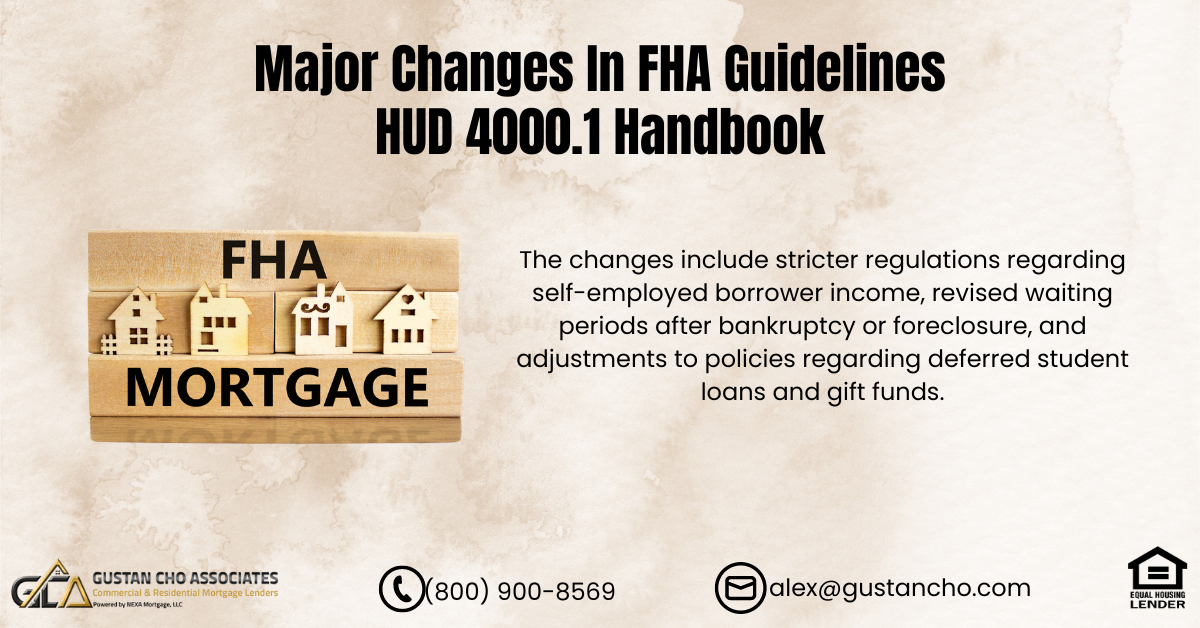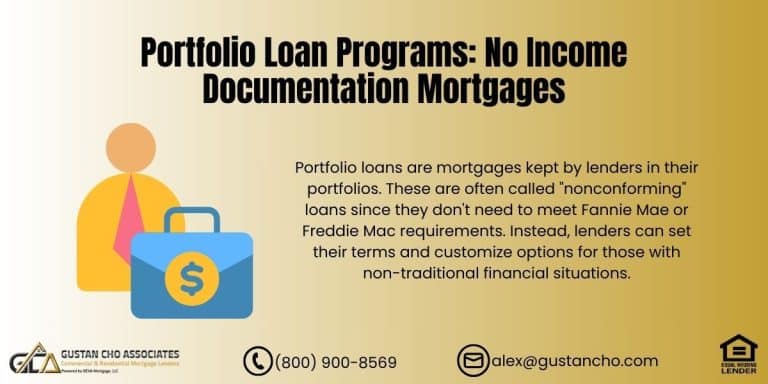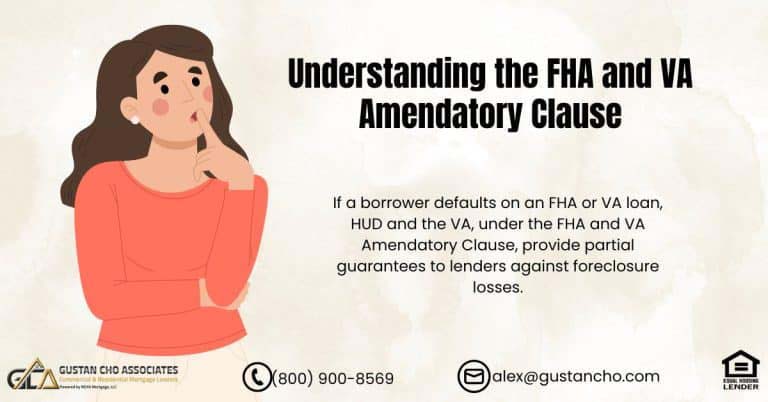This guide will delve into the major changes in FHA guidelines, specifically the HUD 4000.1 Handbook, which may have implications for individuals applying for FHA loans. Major changes in FHA guidelines have been in place for two consecutive years, as stipulated in the updated HUD 4000.1 Handbook. Homebuyers, homeowners, realtors, and third-party mortgage and real estate professionals. It is easier and faster to navigate through GCAs FHA guidelines HUD 4000.1 Handbook on FHA loans than it is to navigate through the 1,000 pages of HUD’s Mortgagee Letter of the actual HUD 4000.1 FHA Handbook.
The FHA Handbook 4000.1 compiles the complete HUD Agency Mortgage Guidelines related to FHA loans. Gustan Cho Associates commits to regularly updating this article to inform viewers of major changes in the FHA loan qualification criteria. Throughout the following sections, we will answer common inquiries about FHA guidelines, particularly in areas where mortgage lenders may offer contradictory information. Our goal is to present you with factual information rather than telling you what you may want to hear. Stay tuned for updates on the major changes in FHA guidelines. In the following paragraphs, we will cover major changes in FHA guidelines.
What Is The Most Recent Version of the HUD 4000.1 Handbook
With more than 30% of our audience consisting of loan officers and mortgage professionals, Gustan Cho Associates prioritizes the need to keep our content up-to-date on the latest agency modifications in mortgage guidelines. We regularly refresh information from the HUD 4000.1 Handbook on www.gustancho.com and our affiliated websites. If you have any inquiries or concerns regarding the recent updates in the HUD 4000.1 Handbook related to FHA loans, please don’t hesitate to utilize the comment section below this article.
What Are The HUD Guidelines on FHA Loans
Gustan Cho Associates is committed to informing you about any updates on agency mortgage guidelines. These alterations frequently impact individuals looking to purchase a home or refinance their existing home loans through an FHA-insured mortgage. If you are a first-time homebuyer considering entering the housing market, this blog post aims to provide helpful guidance. Dale Elenteny, a senior loan officer at Gustan Cho Associates said the following about the major changes in FHA guidelines:
Under the umbrella of the United States Department of Housing and Urban Development (HUD), FHA has created a newly revised set of FHA Guidelines under the revised HUD 4000.1 FHA Handbook.
We will be covering the most frequently asked questions about HUD guidelines on FHA loans borrowers often are confused about after being told NO by lenders who tell them they do not qualify for an FHA loan. One noteworthy update among the major changes in FHA Guidelines outlined in HUD 4000.1 involves modifications related to deferred student loans and the documentation of gifted funds from family members or relatives. These funds are intended for the primary borrower to use towards a home purchase’s down payment and closing costs. We strive to provide accurate and timely information to empower you to navigate these changes effectively.
Loan-To-Value Update on Cash-Out Refinance on FHA Loans
One of the major changes in FHA guidelines pertains to cash-out refinances, marking a notable shift from the prior regulations. Previously, FHA loans offered a distinct advantage over other home mortgage programs by permitting a maximum loan-to-value (LTV) ratio of 85% for cash-out refinances. Nevertheless, a noteworthy change initiated by HUD has now revised this LTV threshold, reducing it to 80% for cash-out refinance mortgages.
How Do You Win a Bidding War With FHA Loans?
The real estate sector is experiencing a surge, with a significant uptick in home prices. Numerous homeowners are witnessing a substantial increase in home equity due to the remarkable rise in property values. Major changes in FHA guidelines have occurred in response to the swift escalation in home value guidelines. Both the Department of Housing and Urban Development (HUD) and the Veterans Administration (VA) have implemented changes by reducing the loan-to-value (LTV) caps specifically for cash-out refinances. Under the revised guidelines, VA has lowered the LTV for cash-out refinances from 100% to 90%.
Major Changes To Deferred Student Loans
The HUD 4000.1 Handbook, updated by the Federal Housing Administration on January 18, 2023, has replaced all prior HUD FHA Handbooks. While some guidelines remain unchanged, there are noteworthy major changes in FHA guidelines. One of the most significant alterations involves deferred student loans, potentially affecting home buyers, especially those with larger student loan balances.
What Has Changed To Student Loan Guidelines on FHA Loans
Major changes in FHA Guidelines have been implemented, impacting the treatment of student loans for homebuyers. Before this revision, borrowers with student loans could exclude their loan payments from debt-to-income ratio calculations if the loans were deferred for a minimum of 12 months. Now that is not the case. Whether the student loans are deferred for longer than 12 months or if borrowers have zero payments on student loans due to an <a ” href=”https://gustancho.com/mortgage-with-high-dti/”>income-based repayment plan, also referred to as IBR, there will always be an amount that is included in the borrower’s debt-to-income ratios.
For IBR payments to be used on FHA loans, the IBR payment cannot be zero. It needs to be higher than zero. At least one dollar IBR payment. The updated guidelines permit income-based repayment (IBR) on FHA loans. It is essential to note that a zero IBR payment is no longer acceptable. A monthly IBR payment of at least one dollar or more is now required for compliance.
Pre-Qualify Today Even With Large Student Loan Balance
Apply Online And Get recommendations From Loan Experts
Student Loan Debt Versus DTI
Suppose the borrower and the student loan provider are unable to provide documentation for the monthly student loan payments, either due to the student loan being in deferment or the payment amount being $0 per month as a result of the borrower being enrolled in an income-based repayment plan (IBR). In that case, the mortgage underwriter will employ the following procedure. This situation aligns with the major changes in FHA guidelines.
- 0.5% of the balance of the student loan will be used as a monthly hypothetical monthly debt expense
- The 0.50% of the outstanding student loan balance figure will be used to calculate the borrower’s debt-to-income ratios
- The borrower does not have to pay anything on the student loan debt
Major changes in FHA guidelines have been implemented, including income-based repayment plans, a feature previously exclusive to conventional loans. Moreover, borrowers can now incorporate 0.50% of their student loan balance as the assumed monthly debt when calculating debt-to-income ratios.
How High Student Loan Balances Affect DTI on FHA Loans
Major Changes In FHA Guidelines: Including a 0.50% outstanding student loan, utilized in debt-to-income (DTI) calculations, represents a hypothetical debt scenario. Alternatively, borrowers can engage with their student loan provider to obtain a theoretical monthly fully amortized payment based on an extended term, typically spanning 25 years. The fully amortized monthly payment over an extended term needs to be in writing by the student loan provider. You can ask the student loan provider customer service representative if you can get a longer extended repayment term longer than 25 years. When the term for repayment extends beyond 25 years, the payment for student loans that are fully amortized may be less than 0.50% of the remaining balance of the loan.
Getting Hypothetical Amortized Monthly Payment From Student Loan Provider
The fully amortized monthly payment over an extended term can be used in lieu of the 0.50% of the outstanding student loan balance. This amount normally turns out to be just under 0.50% of the outstanding student loan balance. Borrowers with higher student loan balances need to see if they can qualify for conventional loans. Conforming Loans accepts IBR Payments as long as it reports to credit bureaus. This holds even for zero monthly payment IBR payments.
Other Major Changes In FHA Guidelines Under HUD 4000.1 Handbook
Major changes in FHA guidelines can impact individuals applying for FHA loans. Self-employed borrowers are required to submit two years’ worth of income tax returns. Mortgage underwriters pay close attention to the underwriting process for self-employed borrowers. Self-employed borrowers need to provide two years of federal income tax returns. If the borrower has W2 income from self-employment income, the borrower needs to own less than 25% of the company to use the W2 income and not the company tax returns. If the borrower owns 25% or more of the company, the company’s federal tax returns need to be used. Additionally, mortgage underwriters also scrutinize declining income. If self-employed borrowers experience a 20% or greater decline in income from one year to the next, manual underwriting becomes necessary for their application.
Decreasing Income For Self-Employed Borrowers on FHA Loans
Major changes in FHA guidelines include the restriction on using Automated Underwriting System findings for self-employed borrowers whose income has decreased by over 20% from one year to another. Additionally, there are revised waiting periods for FHA loan qualification after bankruptcy, foreclosure, deed instead of foreclosure, and short sale.
Waiting Period Guidelines After Bankruptcy and Foreclosure
There are mandatory waiting period requirements after bankruptcy, foreclosure, a deed in lieu of foreclosure, and a short sale on government and conventional loans. The waiting period will be determined by ordering the FHA case number assignment date instead of the application date.
This change in FHA guidelines is a benefit and will speed up mortgage loan applications. On FHA refinance mortgage loans on land contract refinances, the deed of the land contract needs to be recorded for the refinance mortgage to proceed.
Major Changes In FHA Guidelines With Gift Funds
Homebuyers getting gift funds for their down payment need to have the gift fund donor provide 30 days of bank statements. Gift funds can be used for the down payment and closing costs on FHA loans. Gift funds cannot be used for reserves.
Gift Funds need to be a gift and not a loan. Gift funds for a home purchase needs to only be used for the down payment and closing costs on a home purchase and never can be used for reserves. Reserves can only be from the borrower’s own funds and cannot be gifted.
The bank statement must show proof of the gift funds leaving the donor’s bank account and into the home buyer’s bank account if it is from a bank wire transfer or provide a canceled check to show documentation.
What Documentation Is Required For Gift Funds on FHA Loans?
The mortgage lender provides a gift letter stating that the gift funds are solely a gift, not a loan. The gift letter also needs to state the gift will not be paid back and needs to be signed by the gift fund donor. The gift fund letter must be fully legible and cannot have whiteouts or cross-outs on the bank account balances and any numbers. Any irregular and large deposits in the donor’s bank accounts will be carefully reviewed and questioned.
In general, gift funds are not viewed favorably by automated underwriting systems or by mortgage lenders. If you get a refer/eligible per the automated underwriting system with gift funds, try removing the gift funds and re-running AUS. You will be surprised by how often you will get an automated underwriting system without gift funds versus with gift funds. Gift funds can be used for a home purchase’s down payment and closing costs.
FHA Spot Loans on Non-HUD Approved Condominiums
More and more condominium complexes are not renewing their annual HUD condo certifications due to the costs and red tape involved. HUD has allowed FHA Spot Loans. FHA Spot Loans are when condo buyers can qualify for a condo purchase with an FHA loan in a condo complex where the condo complex is not HUD Approved. Gustan Cho Associates, empowered by NEXA Mortgage, LLC, are mortgage brokers licensed in 48 states, including Puerto Rico, Washington, DC, and the U.S. Virgin Islands. With a lending network of 275 wholesale mortgage lenders, there is no mortgage loan program Gustan Cho Associates does not offer its borrowers. Condominium sales are expected to surge with the re-emergence of FHA Spot Loans. The re-emergence of FHA Spot Loans will enable homebuyers who prefer a condominium versus a single-family home to purchase a condominium unit with an FHA loan. FHA loans are the most popular mortgage loans in the nation for first-time homebuyer borrowers with high debt-to-income ratios, borrowers with bad credit, homebuyers with outstanding collections and charge-off accounts, and homebuyers with credit scores down to 500 FICO.
FAQ on Major Changes in FHA Guidelines
- 1. What are the major changes in FHA guidelines? The major changes in FHA guidelines, outlined in the updated HUD 4000.1 Handbook, have implications for individuals applying for FHA loans. These changes include stricter regulations regarding self-employed borrower income, revised waiting periods after bankruptcy or foreclosure, and adjustments to policies regarding deferred student loans and gift funds.
- 2. What is the most recent version of the HUD 4000.1 Handbook? The most recent version of the HUD 4000.1 Handbook, which encompasses FHA guidelines, was updated on January 18, 2023. This handbook replaces all prior HUD FHA Handbooks and serves as a comprehensive resource for understanding the requirements for FHA loans.
- 3. How do the changes affect cash-out refinances on FHA loans? One significant change in FHA guidelines pertains to cash-out refinances, which now have a reduced maximum loan-to-value (LTV) ratio of 80%, down from the previous 85%. This adjustment impacts borrowers seeking cash-out refinancing options through FHA loans.
- 4. What are the updates regarding student loan guidelines on FHA loans? The revised guidelines now require borrowers with student loans to have a monthly income-based repayment (IBR) payment of at least one dollar. Previously, borrowers could exclude deferred student loan payments from debt-to-income ratio calculations, but now a portion of the outstanding balance is factored into DTI calculations.
- 5. How do these changes affect gift funds for FHA loans? Borrowers receiving gift funds for their down payment must adhere to stricter documentation requirements. Gift funds must be clearly identified as gifts, not loans, and donors must provide 30 days of bank statements to verify the transfer of funds. Additionally, gift funds cannot be used for reserves and must be solely for the down payment and closing costs.
- 6. Can FHA loans be used for condominium purchases in non-HUD approved complexes? Yes, FHA Spot Loans allow borrowers to purchase condominium units in complexes that are not HUD-approved. This offers more flexibility for homebuyers interested in condominiums rather than single-family homes, particularly in markets where condominium sales are on the rise.
Speak With Our Loan Officer for Mortgage Loan
This blog about the Major Changes In FHA Guidelines HUD 4000.1 Handbook was updated on January 17th, 2025.











